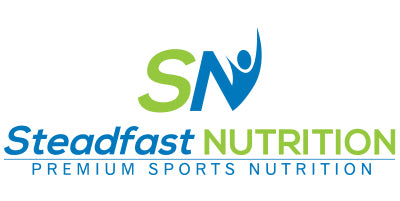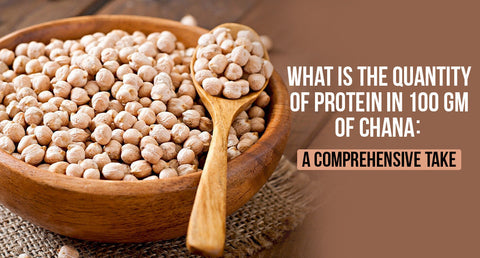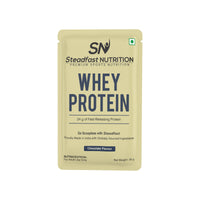Chickpeas, or chana, which belongs to the legume family, are a common food item used to create various dishes in almost every Indian household. They are also a popular ingredient in composing versatile dishes in the Middle East, Mediterranean, and South Asia. Apart from being part of various delicacies, they also have high nutritional content offering multiple health benefits. Chickpeas are well known to contain many vitamins and minerals and are also a rich source of fibre and protein. Chana, belongs to the plant family as lentils, peas, soybeans, and peanuts. Chana is most commonly available in 2 varieties: kabuli chana and kala chana, also used as roasted chana. Going further, we will discuss how much protein is in 100 gm of chana, if it is enough, and how to consume it for maximum health-related benefits.
Protein Content in Chana (Chickpeas)
To answer the common question often googled on the web, “How much protein is in 100 gm chana?” There are certain things we need to consider, whether it is roasted, cooked, soaked or raw. According to the data given in IFCT 2017 (Indian food composition tables) by NIN-ICMR, raw chickpea provides approx 18.7 grams of protein for each 100 gm, making it one of the protein-dense foods available from plant sources to contribute to your recommended daily allowance (RDA) of protein needs.
Chana as a Protein Source: Is It Enough?
The answer to whether it is enough may depend on various factors such as individual dietary requirements and the kind of lifestyle one may lead. For example, an athlete might require more than just chana to fulfil their daily protein needs as it lacks a few amino acids. Now let’s know more about chana nutrition facts. Chickpeas are a readily available ingredient in your kitchen packed with essential nutrients such as protein and minerals such as calcium and magnesium which improve bone health. Additionally, they are rich in iron and dietary fiber which help prevent anaemia and constipation respectively. As it contains complex carbohydrates it also acts as a source for providing sustained energy. Even though chana is rich in protein, it cannot be considered the best plant-based or vegan protein source if consumed solely because it lacks certain amino acids, which are crucial for maintaining optimal health. Thus, despite its high nutritional value, chana needs to be paired with other food sources to fulfil the daily essential amino acid requirement, such as milk & milk products, millets, rice or quinoa, and other sources of pulses and legumes.
Health Benefits of Chana in Your Diet
Chana is not just about the amount of protein it contains; beyond its protein content, it also offers many health benefits as mentioned below:
- Aids Digestion: As we know, chickpeas are considered one of the best sources of fibre as a vegan/vegetarian protein source. The presence of high fibre content in chickpeas helps promote digestion by acting as a prebiotic and helps in easing digestion for smooth bowel movement, preventing constipation-related issues.
- Weight management: Chickpeas being nutrient-dense, are also moderately low in calories. It is well known that, the combination of protein and high fibre content promotes satiety or the feeling of fullness, which curbs cravings aiding weight management.
- Regulate Blood Sugar: Chickpeas have a low glycemic index and due to their high fibre content, promote a slower release of glucose in the blood. This helps in preventing spiking of blood sugar levels in the body, making it a good food option for those with type 2 diabetes.
- Nutrient Dense: It contains essential vitamins and minerals, including iron, which may safeguard the body against iron deficiency. It also contains folate, which is important for cell formation, healthy cell function, and growth. Vitamin B complex vitamins promote energy production and metabolism and vitamin E is beneficial for boosting immunity.
- Supports bone health: This protein-rich legume also contains various minerals like calcium, phosphorus, and magnesium that play a key role in strengthening the bones and preserving bone mineral density.
-
Maintains Heart Health: Chana, if included in a well-balanced diet, can help promote heart health as it contains both fibre and potassium both, which have cholesterol-lowering and blood pressure-managing properties respectively, that can contribute to a healthy heart.
There are several health benefits of chana as mentioned above, however, it is important to note that a well-balanced diet should include fruits, vegetables, nuts, seeds and grains like rice, ragi, and jowar for a healthy and sustainable way of living.
Factors influencing the protein content of Chana
The protein content in chana can be influenced by several factors as given below:
-
Cooking Method: Digestibility is significantly improved when the chana is soaked. However, prolonged cooking time after soaking may lead to losing a few amino acids.
Variety of Chana: There are various factors such as soil conditions, cultivation method and genetic features that come into play while determining the availability of protein in 100 gm chana. -
Production and preparation: Factory-packed processed chana products, like canned chickpeas or frozen chickpeas, may have different nutrient profiles and slightly lower levels of protein in 100 gm chana compared to home-cooked chana due to processing effects.
Nutritious Chana Recipes for a Healthier You
Here are some easy recipes by which you can incorporate chana into your diet:
- Hummus: Hummus is a savoury plant-based protein dip originating from the Middle East and is also an essential part of the Mediterranean diet. This dip or sauce is made from cooked and mashed chickpeas blended with garlic, lemon juice, olive oil, and tahini (sesame). It is super smooth and creamy with a nutty flavour. It is a healthy and good alternative to processed sauces and dips.
- Chana masala curry: It is one of the most popular north Indian cuisines made with a spicy onion and tomato gravy often eaten with rice. Widely famous as chole chawal in Indian cuisine, this can even be paired with a variety of breads such as roti and puri.
- Chickpea Salad: Integrate chickpeas with lots of veggies like lettuce, onion, tomato, cucumbers, and bell peppers along with creamy hummus or hung curd dip seasoned with herbs to make a perfect protein salad bowl for yourself. You can have it as a side dish with a whole meal or just pack it up as a go to snack.
- Chickpea patties: These highly nutritious chickpea patties are also called chana tikkis, kababs or cutlets and even called falafel. They are easy to make and can also be stored in the freezer for later use. These chana patties are a great alternative to processed potato patties. Add them to your favourite burger or eat them as a perfect snack option with high protein. However, it is important to keep in mind usage of oil while frying, or switching over to a grilled or baked method can make it a healthy option.
-
Chickpea soup: You can simply use the stock of boiled chickpea for soup or include the whole chickpeas itself. Just add kabuli chana, some onion, garlic, celery or rosemary along with spices and your thick, creamy protein-rich soup is ready. With goodness of fibre and healthy calories, pair it up with a piece of healthy toast or sandwich to complete your meal.
-
Kabulichana Chaat: Searching for some tasty and tangy street foods with a healthy twist? Then Chana Chaat is the one for you. It is loaded with proteins and easy to make. Take boiled chickpeas and add boiled potato, onion, tomato and just add some desi spice masalas. You can also squeeze lemon or top up with some freshly cut coriander leaves or chutney along with a tangy tamarind sauce to perk up the flavours.
Nutritional facts of chana against other sources of protein - Chana and animal sources: Animal sources like organ meat, chicken, poultry, and fish are considered complete protein sources with a complete protein profile, but they have higher fat content comparatively. Chana offers fibre and other nutrients like calcium, phosphorus that meat lacks and can be consumed as a key source of protein for both vegans and vegetarians.
- Chana and Whey Protein: Whey is the byproduct of cheese; it is a complete protein source and one of the most popular supplements amongst athletes and people trying to get fit. Whey protein provides a quicker protein boost but chana offers whole-food benefits making it one of the best plant-based protein sources.
- Chana and Eggs: Eggs are an affordable and efficient choice amongst fitness enthusiasts, gym goers and athletes to fulfil their daily protein requirement. Eggs contain higher cholesterol content but chana is a cholesterol-free alternative along with high fibre content supporting heart health, making it one of the best plant-based protein sources for vegetarians and vegan individuals.
- Chana and milk & milk products: Both chana and milk are good sources of calcium, and protein but chickpeas have higher content of iron, potassium, and dietary fibre and a moderate amount of carbohydrates, making them a better choice.
-
Chana and Soyabean: Soybeans have a higher content of protein than chana. They also have an upper hand when comparing the vitamin b2, Vitamin K and calcium content. Chickpeas have more fats and carbohydrates than soybean.
All of the above-mentioned sources of protein are crucial components of a well-balanced diet. Though chana is a good vegan protein option, one should consider consuming it with other protein-rich food options for better results in both health and fitness.
Conclusion
To conclude, chana is a versatile and a nutritious type of legume that offers a significant amount of protein, along with numerous other health benefits. Whether you're a vegetarian, vegan, or simply looking to increase your protein intake, chana is an excellent addition to your diet, especially for people on their weight loss journey. Chickpeas can be cooked and served in many refreshing ways to satisfy your cravings avoiding unhealthy snacks. It provides a burst of flavours, keeping your calorie intake in control and leading to a healthier life. However, it is necessary to incorporate exercise and other nutrient-dense high protein foods in your diet to fulfil daily protein requirements.
FAQs
1. Does the protein content of chana change after cooking?
- Yes, cooked chana has a slightly lower amount of protein due to increased water content and loss of certain amino acids. However, the total amount of protein digestibility increases after cooking the chickpeas.
2. Does soaking chana decrease its protein content?
- No, there is no evidence to suggest that soaking chana necessarily decreases its protein content but it can lead to the leaching of a few vitamins and phytates, still improving the digestibility of chana.
3. Is chana a reliable protein source for vegetarians?
- Yes, chana, when combined with other plant-based protein sources such as whole grains, pulses and millet and milk and milk products is a reliable protein source for vegetarians. Whole grains are complemented with chana to make up for the absence of the essential amino acid methionine. Otherwise, for non-vegetarians, animal-based protein sources such as seafood and chicken can turn into a reliable protein source.
4. How does chana's protein content vary compared to other legumes?
- Chana and lentils are staples in many parts of the world and hold relatively similar protein content per 100 gm; for example, the protein content in 100 grams of rajma is 19.5 grams and moth beans is 19.75g which is almost similar to that of kabulichana which is 18.7 g. Whereas when compared with soyabean - it leaves chana far behind with protein content up to 37 g for each 100 g. Hence it is always suggested to include multiple varieties of food in your meals to get the best benefit, making them all a valuable inclusion for a plant-based diet.
5. Which has more protein: roasted chana or boiled chana?
- Both roasted and boiled Chana have nutrient-dense profiles. But, roasted Chana tend to retain more of its original minerals, amino acids and protein content than boiled chana which loses polyphenols (antioxidants) and certain key amino acids - Leucine, lysine, valine and tyrosine. Moreover, water retention due to the process of boiling makes boiled chana lower in calories but easy to digest. To sum up, both cooking methods give nutritious results but roasted chana preserves more protein than boiled chana.
6. What is the protein in 100 gm chana?
- As discussed above, raw chana provides approximately 18.7 g of protein per 100 g as per IFCT 2017 data.
7. Is chana good for weight loss?
- Yes, the high fibre and protein content of chana can help promote weight loss as it aids satiety if followed by a calorie deficit diet and exercise. Also it has a lesser fat content with moderate calories, making it a suitable option for those on a weight loss regime. You can munch it as a healthy snack option, have it as a protein-rich soup or make it a part of your healthy salad bowl.
8. How does chana compare to other protein sources like eggs or meat?
Chana in comparison to animal based protein sources such as meat, poultry, fish and eggs has an incomplete protein profile. However, it has certain distinct nutritional advantages over animal proteians. Chana has a notable amount of fibre and minerals such as folate and manganese along with beneficial antioxidants which may not be a part of animal meats. Chana stands out in its nutrient profile for its high fibre and low fat content. In addition to this, Chana can provide the benefits of complete proteins if combined with whole grains, other legumes, milk and milk products. To sum up, both Chana and animal based protein sources have advantages and limitations giving them diverse nutritional profiles.


